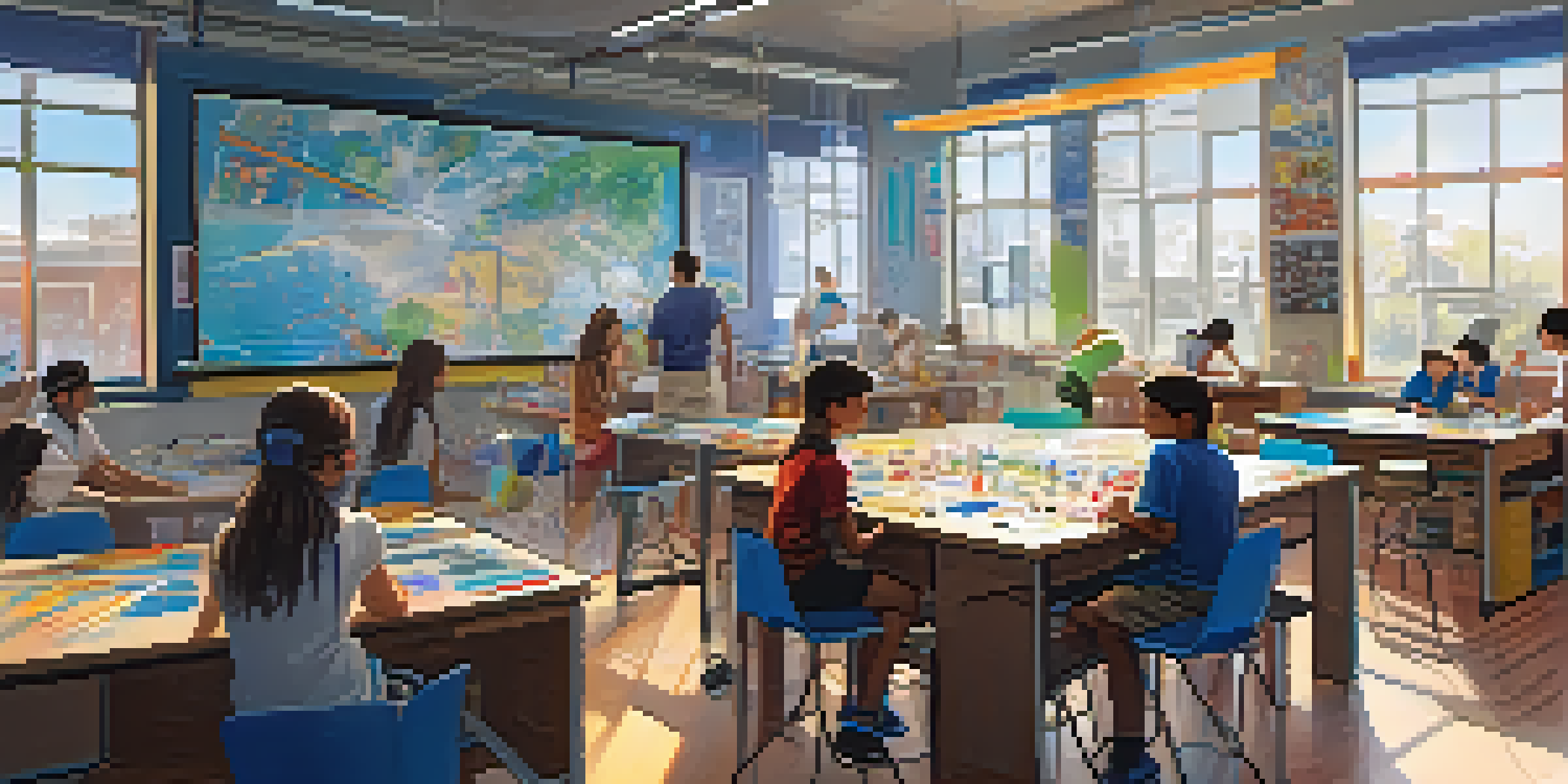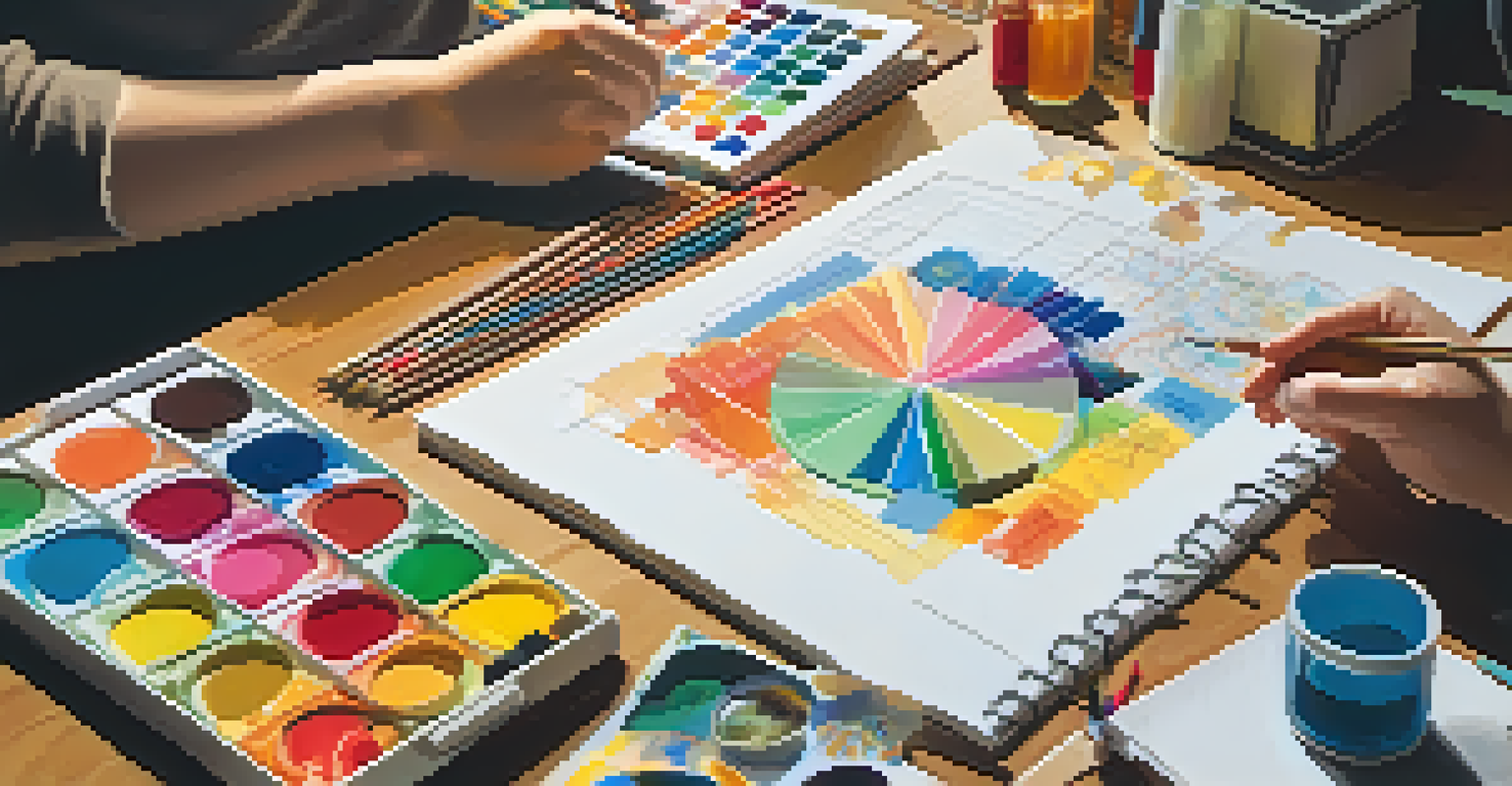The Role of Creativity in STEM: A STEAM Approach

Understanding STEM and Its Traditional Focus
STEM stands for Science, Technology, Engineering, and Mathematics. Traditionally, these fields emphasize analytical thinking and problem-solving skills. While these skills are crucial, they often overlook the significance of creativity in driving innovation and discovery. Recognizing this limitation has prompted educators and professionals to rethink how these subjects are taught and applied in real-world scenarios.
Creativity is thinking up new things. Innovation is doing new things.
Many people view STEM as a rigid framework, but this perception can stifle the potential for groundbreaking ideas and solutions. For instance, consider how engineers might design a bridge; they can benefit immensely from creative thinking to envision structures that are not only functional but also aesthetically pleasing. This is where the integration of creativity becomes vital, leading to what we now refer to as STEAM.
The shift towards a STEAM approach—adding 'Arts' to the mix—encourages a balance between logic and imagination. It opens doors to new ways of thinking and problem-solving, making the learning process more engaging and effective for students.
What is STEAM and Why It Matters
STEAM stands for Science, Technology, Engineering, Arts, and Mathematics. By incorporating the arts, STEAM emphasizes creativity and innovation as essential components of learning. This approach not only enhances student engagement but also prepares them for a workforce that increasingly values creativity alongside technical skills.

For example, a project involving robotics can allow students to design not just the mechanics but also the aesthetics of their robots. This dual focus cultivates a deeper understanding of both engineering principles and artistic expression. By blending these disciplines, students are better equipped to tackle complex challenges in real-world scenarios.
Creativity Enhances STEM Learning
Integrating creativity into STEM education fosters innovation and problem-solving skills essential for today's workforce.
Moreover, integrating the arts into STEM can lead to a more holistic education experience. It encourages students to think outside the box, fostering an environment where unconventional ideas can flourish, ultimately leading to greater innovation.
The Interplay of Creativity and Problem-Solving
Creativity plays a crucial role in effective problem-solving, especially in STEM fields. When faced with challenges, innovative thinking allows individuals to explore multiple solutions instead of sticking to traditional methods. This flexibility is vital in today's fast-paced world, where adapting quickly to change is essential.
The greatest innovations of the 21st century will be at the intersection of technology and the arts.
For instance, scientists often encounter unexpected results in their experiments. A creative mindset can help them view these surprises as opportunities for exploration rather than setbacks. By embracing creativity, they can pivot their research direction or develop new hypotheses that may lead to significant breakthroughs.
In essence, creativity enhances the problem-solving process by encouraging exploration and experimentation. This not only leads to more effective solutions but also nurtures a culture of innovation where new ideas are welcomed and explored.
Fostering Creative Thinking in Education
To harness the power of creativity in STEM, educational institutions must foster an environment that encourages creative thinking. This can be achieved through project-based learning, where students engage in hands-on activities that blend multiple disciplines. Such an approach allows learners to explore problems from various angles, promoting a deeper understanding of the subject matter.
Additionally, incorporating artistic elements into STEM curricula can inspire students to express their ideas in unique ways. For example, a science class could involve creating a visual representation of complex data, helping students to grasp difficult concepts more easily. This integration of creativity not only makes learning more enjoyable but also reinforces critical thinking skills.
STEAM Prepares Future Innovators
The STEAM approach equips students with a diverse skill set, blending technical and creative abilities to tackle complex challenges.
Ultimately, when educators prioritize creativity alongside technical knowledge, students are better prepared for the challenges they will face in their future careers. They learn to approach problems with an open mind, ready to innovate and adapt as needed.
Real-World Applications of STEAM Principles
The principles of STEAM are already being applied in various industries, demonstrating its effectiveness in fostering creativity. For instance, in the tech sector, companies are increasingly seeking professionals who can blend technical skills with creative thinking. This trend highlights the importance of a STEAM-based education in preparing students for the modern workforce.
Take the automotive industry, for example. Engineers and designers work collaboratively to create vehicles that are not just functional but also visually appealing and environmentally friendly. This requires a deep understanding of both engineering principles and artistic design, showcasing how STEAM principles can lead to innovative products.
These real-world applications illustrate that combining creativity with STEM disciplines can result in groundbreaking advancements. As industries continue to evolve, the need for individuals who can think creatively while applying technical skills will only grow.
The Future of Learning: Embracing STEAM
As we look to the future, embracing the STEAM approach in education will be crucial. This shift can prepare students for a workforce that demands not only technical proficiency but also creative problem-solving abilities. By integrating the arts into STEM education, we can cultivate a generation of innovators who are equipped to tackle complex global challenges.
Educational institutions must adapt their curricula to reflect this shift, incorporating projects that encourage interdisciplinary collaboration. By doing so, they will foster an environment where students can explore their interests and develop a diverse skill set that includes creativity and critical thinking.
Real-World Impact of STEAM
Industries increasingly value professionals who combine technical expertise with creative thinking, demonstrating the effectiveness of STEAM principles.
In conclusion, the future of learning lies in the successful integration of creativity within STEM. By embracing the STEAM approach, we can empower students to become the innovators and problem-solvers of tomorrow.
Conclusion: The Importance of Creativity in STEM
In summary, creativity is an essential component of the STEM fields, and its integration through a STEAM approach can lead to significant advancements in learning and innovation. By recognizing the value of creative thinking, we can cultivate an educational environment that prepares students for the complexities of the modern world. The blend of analytical skills and creative expression not only enhances problem-solving abilities but also drives innovation across various industries.
As we continue to embrace this shift, it is vital for educators, policymakers, and industry leaders to advocate for STEAM in schools and workplaces. By prioritizing creativity alongside technical skills, we can ensure that future generations are equipped to navigate an increasingly complex and dynamic world.

Ultimately, the role of creativity in STEM is not just a trend; it is a fundamental necessity for fostering innovation and preparing individuals for success in their careers. Embracing this paradigm will undoubtedly lead to a brighter, more innovative future.